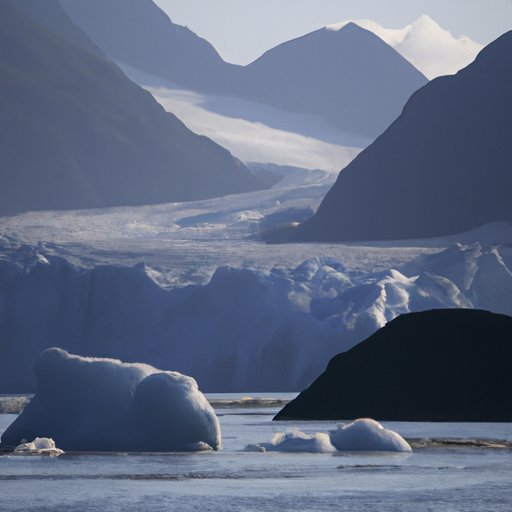Introduction
Alaska is known for its cold and snowy winters, but what about its summers? With global temperatures rising due to climate change, many people are wondering how warm it gets in Alaska during the summer months. This article will explore the effects of climate change on Alaskan temperatures, as well as look at historical temperature data to determine how hot it can get.
Examining the Effects of Climate Change on Alaskan Temperatures
Climate change is having a significant impact on temperatures in Alaska. According to research from the National Oceanic and Atmospheric Administration (NOAA), Alaska has warmed twice as fast as the rest of the United States since 1950. On average, temperatures in Alaska have increased by 3.4°F (1.9°C) over the past 70 years. In comparison, the average temperature in the contiguous United States has only increased by 1.6°F (0.9°C).
These higher temperatures are having a noticeable effect on the environment. Warmer summers mean that snow and ice melt faster, leading to coastal erosion and flooding. They also lead to earlier springs and longer growing seasons, which can cause plants to bloom earlier than usual. Warmer temperatures can also have an impact on wildlife, as some species struggle to adapt to the changing conditions.
Exploring Alaska’s Heat Records: How Hot Does It Get?
To answer the question of how hot it gets in Alaska during the summer months, we need to look at historical temperature data. The highest recorded temperature in Alaska was 100°F (38°C) in Fort Yukon on June 27th, 1915. This record still stands today, although there have been other days when the temperature has reached close to 100°F (38°C). For example, the temperature in Eagle, Alaska, reached 99°F (37°C) on July 5th, 2019.
The average summer temperature in Alaska varies depending on the region. In Anchorage, the average temperature in July is 63°F (17°C). In Fairbanks, the average temperature in July is 66°F (19°C). These temperatures are much cooler than other parts of the United States. For comparison, the average temperature in July in Phoenix, Arizona is 105°F (41°C).

Benefits and Challenges of Living with Warmer Summers in Alaska
Although warmer temperatures can have negative impacts on the environment, they do bring some benefits. Warmer summers allow people to enjoy more outdoor activities like hiking, fishing, and camping. They also provide longer growing seasons, which can be beneficial for farmers and gardeners. Warmer temperatures also mean less energy is needed to heat homes in the winter, resulting in lower heating costs.
However, there are also some challenges associated with warmer summers in Alaska. Warmer temperatures can lead to more insect infestations and disease outbreaks, which can affect both humans and wildlife. Warmer temperatures can also lead to faster snowmelt, which can cause flooding and soil erosion. Finally, warmer summers can result in more wildfires, which can be devastating for communities.
Conclusion
It is clear that climate change is having a significant impact on temperatures in Alaska. Average summer temperatures have increased significantly over the past 70 years, and the highest recorded temperature in Alaska is still 100°F (38°C). While warmer temperatures can bring some benefits, they can also lead to more insect infestations, disease outbreaks, flooding, and wildfires. To mitigate these risks, it is important for individuals and communities to take steps to reduce their carbon footprint and protect the environment.
(Note: Is this article not meeting your expectations? Do you have knowledge or insights to share? Unlock new opportunities and expand your reach by joining our authors team. Click Registration to join us and share your expertise with our readers.)
